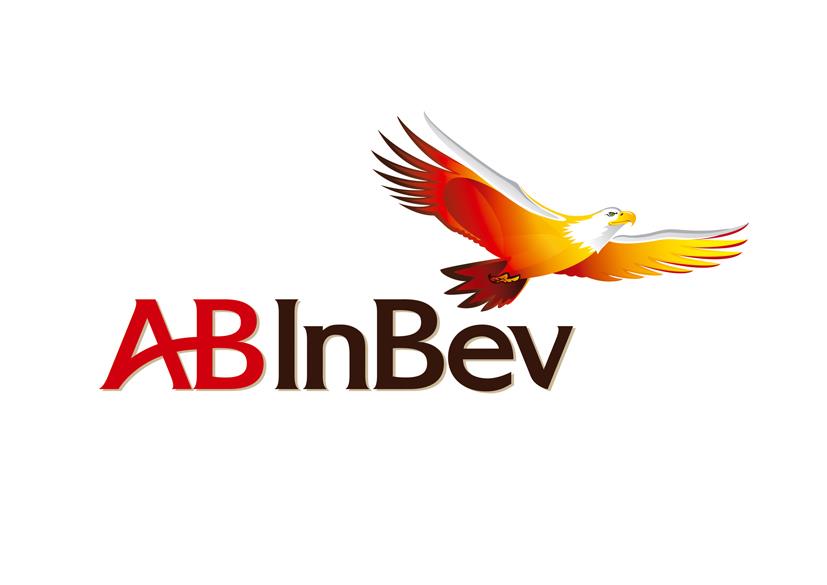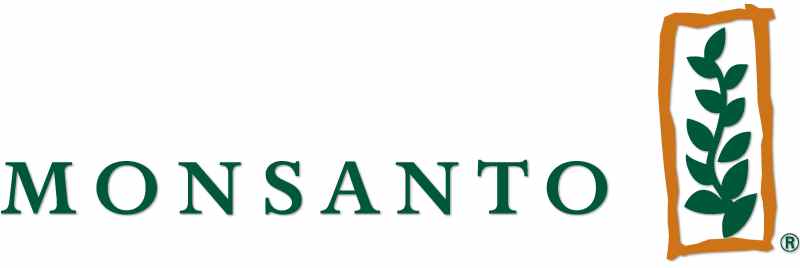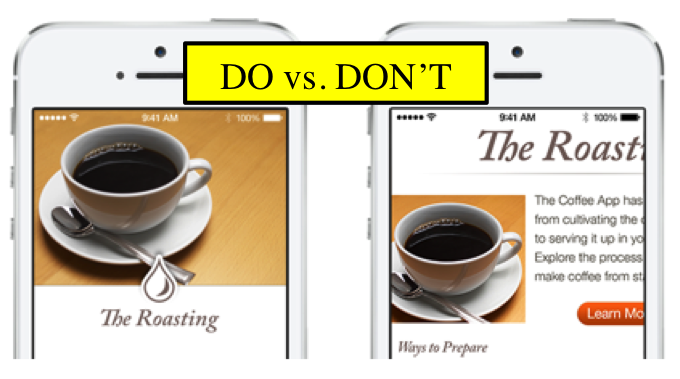 By: Ricky Cheers, Lingru Kong, Lyndsey McKinney, Akeeva Pork
By: Ricky Cheers, Lingru Kong, Lyndsey McKinney, Akeeva Pork
Facebook was launched (it was originally called thefacebook) on February 4th, 2004 by Mark Zuckerberg and fellow Harvard students Eduardo Saverin, Andrew McCollum, Dustin Moskovitz and Chris Hughes. While the social media platform was initially only for Harvard students, it expanded to include other schools in the Boston area, Stanford and all other Ivy League schools. After this, it was so successful that it became available to all college students in the United States and Canada. However, since 2006, anyone 13 and over is able to have an account (unless prohibited by state and local laws). Since its humble beginnings, Facebook has grown into the one social media site that everyone AND their mother utilizes. In 2012, Facebook Inc. held its initial public offering and began selling public stock, solidifying its status as both a legitimate business and a dominant social networking site. The platform only continues to grow, as it also acquired both the photo-sharing site Instagram and messaging service Whatsapp.
For those who are not familiar with this social media giant, Facebook functions include, but are not limited to, allowing a person to add other users as “friends”, sending messages, posting status updates and photos, sharing videos, creating groups and receiving notifications when “friends” update their profiles. As of August 2015, Facebook has over 1.18 billion monthly active users, a figure that represents great opportunity for marketers everywhere.
Opportunities
There are a plethora of opportunities available for brands to advertise and engage on Facebook. A brand can increase online and local sales by engaging with people on their computers and smartphones, creating targeted ads to reach a specific audience (segment by gender, age, location, interests), boosting posts to reach more people (for a fee), and reconnecting with individuals who have visited its website in the past with a service like Custom Audiences. Businesses can upload customer contact information (email, phone number) and these customers will be sent an ad (if they are registered Facebook users). Additionally, a brand could reach people similar to its current audience with Lookalike Audiences or remarket to its website visitors and send a Facebook ad to those who have visited its website before. Conversion tracking is also a great way to track customer actions and increase online and local sales. With this tool, an organization is able to see if someone clicked on an ad from Facebook and went to the brand website to make a purchase, register, etc. Local Awareness Ads are yet another Facebook device that can boost sales exponentially. These enable a brand to select certain locations, ages, and genders in order to successfully reach potential customers.
Additionally, Facebook is great for promoting an App. Brands have the ability to reach audiences based on age, gender, and devices. More specifically, a brand has the ability to promote app installs and engagement. For example, when individuals click the app ad on Facebook, they will be sent directly to the app store. Additionally, Facebook can aid a brand in reaching people who already have the app installed. These individuals can be sent to a specific part of the app with a click on the Facebook ad (ex: being sent directly to the online store in the app).
Facebook is also excellent for building brand awareness. Not only are there a great deal of users on this platform, it also allows a brand to tell it’s story with engaging video and photos that will surely help it stand out and connect with its audience. Page Insights is also an excellent tool, as it allows brands to improve the way they market to and reach people who like their pages by showing how many likes they have and the amount of new likes, how many people saw their page and their posts and how many people clicked, liked, commented, or shared their pages.
Response rates to customers that engage the business on Facebook
-Telecom – 60.4%
-Airlines – 55.0 %
-Finance – 46.4%
-Retail – 43.6%
-Fashion – 41.5%
-Electronics – 24.9%
-Fast Moving Consumer Goods (FMCG) – 18.8%
-Automotive – 17.0%
-Alcohol – 5.2%
–Linkedin blog group 1 turn in
Media – 4.9%
Case Study: Pura Vida
Pura Vida, an artisan bracelet retailer, utilized Facebook to create brand loyalty (and awareness) and increase sales. The brand partnered with marketing firm Sum Digital to retarget prior visitors with ads for recently viewed products from its website and to cultivate advertisements targeted toward Lookalike Audiences in order to attract new customers. These efforts proved to be an immense success, as the brand’s amount of online orders quadrupled over just two months, it reached a seventy percent increase in conversion rate and it managed to achieve a forty percent lower cost per acquisition.
Source and Learn More: http://topics.nytimes.com/top/news/business/companies/facebook_inc/index.html
How To Check Your Facebook Analytics
Link Up with LinkedIn
 By: Mary Hoffmann, Will Johnston, Kelly Kunkel, Annie Vallie, Justin Zeid
By: Mary Hoffmann, Will Johnston, Kelly Kunkel, Annie Vallie, Justin Zeid
Background
LinkedIn was founded in 2002 by Reid Hoffman who had previous experience with Google, Ebay, and PayPal. It was later officially launched in 2003 which makes it older than any other social platform such as Facebook, Twitter, and YouTube. Five years later LinkedIn was able to open its first international office in London. At the start of 2009, the member count had reached 55 million and Jeff Weiner, who would eventually become the CEO, joined LinkedIn. In 2011, LinkedIn had its first listing on the New York Stock Exchange for about $45 per share. In March of 2015, LinkedIn had more than 364 million users in over 200 countries/territories. They have reported to have 65.6 million unique users in the U.S. alone per month. It is also offered in 24 different languages. The following are some key industries that have seen success by using LinkedIn: Technology, Retail, Financial Services and Education.
Opportunities
LinkedIn differs from other social media sites as it is for professional and business use as opposed to personal use. Whereas on Facebook, most of the people who you would have connections with are family and friends, your connections on LinkedIn are people who you have a business relationship with, such as coworkers and like-minded professionals. There are about 3 million organizations on LinkedIn, so it is almost too easy to be able to connect with others and share information. LinkedIn profiles are more likely to appear at the top of search engines.
Company Page
Another opportunity provided by LinkedIn is for businesses to create a Company Page, which provides a brand-based environment that showcases services or products. It also has recommendation capabilities where members can share their opinions in their own network and on the Company Page.
Nonprofits
When searching for investors, every single Fortune 500 company is represented on LinkedIn, so it is very easy to find those with expendable cash or those looking for new opportunities to donate. They also have added a new section called the Volunteer Marketplace where volunteer opportunities can be posted. Nonprofits can also use this tool to be connected to other volunteer websites like VolunteerMatch or Taproot Foundation.
Case Studies
LinkedIn offers many case studies on their website from various organizations detailing their LinkedIn campaign goals and how these goals were achieved. One example of this is Holiday Inn Express’ “Stay Smart” campaign. Holiday Inn Express used LinkedIn’s Sponsored Updates with videos to target members in sales and business consulting to achieve their ultimate goal of increasing brand awareness. They also set up a LinkedIn Showcase Page to “share content with followers and keep the brand top of mind with travelers.”
As a result, Holiday Inn Express was able to increase their followers from 7 to 1,622 in just 40 days. Along with click through rates and engagement at two times the LinkedIn benchmarks, Holiday Inn Express was able to achieve greater brand sentiment from members through this campaign.
Microsoft had the same initiative when promoting OneNote to educators. Sponsored Updates were targeted towards educators so it’s reaching a more relevant market. The case study brought more traffic and awareness than high-traffic press releases and product updates while outperforming other Microsoft promotions. Over the course of a month, their click-through-rate grew by an average of 46% with their top performing post at a whopping 84% while engagement rate increased by 54%.
Sponsored Updates are great for businesses because it is an easy way to target your posts to a relevant audience to get more immediate feedback and better results.
Comparison to Other Social Media Sites
LinkedIn was started with the idea of having an easy marketplace to network with like-minded professionals, so it will differ from what other popular social media sites have to offer for their users. It is more reputable when looking for donors, board members, volunteers, or looking to create partnership with other companies. In comparison to Facebook which is more of a platform, LinkedIn is an application. In term of revenue, LinkedIn makes more from “premium services” and Facebook makes more revenue from games and advertisements. Over 380 million users are members of LinkedIn and growing, with Twitter not far behind at 316 million and Facebook at a whopping 1 billion users. Another difference is that Facebook and Twitter can be considered “time killers” because users can look at what their friends are posting whether it is pictures or just status updates; however, LinkedIn has a greater utility because it can connect you with people to further your work.
Is Your Mobile App User Friendly?
By: Casey Kleekamp, UMSL MBA Student
I recently attended an UMSL Digital Marketing Seminar: “Mobile Marketing Strategy” hosted by Chris Carril. Chris works at Scottrade as a Mobile Platform Manager and after sitting through his seminar it was clear to me that he is extremely knowledgeable about his field. So I’m excited to share, with you, some information I found insightful.
 Chris shared tons of material on Mobile Marketing – an overview of mobile, stages of mobile app development, emotional design, mobile payment, innovation and the death of mobile strategy, or rather, why marketers need a total marketing strategy that includes mobile, not just a mobile strategy. So much great content, but for the purpose of this blog I’m going to focus on one topic in particular that stood out for me: iOS User Interface Design (UI).
Chris shared tons of material on Mobile Marketing – an overview of mobile, stages of mobile app development, emotional design, mobile payment, innovation and the death of mobile strategy, or rather, why marketers need a total marketing strategy that includes mobile, not just a mobile strategy. So much great content, but for the purpose of this blog I’m going to focus on one topic in particular that stood out for me: iOS User Interface Design (UI).
UI is the design of user interfaces for computers, iPads, mobile etc. that is meant to maximize the user’s experience. (And iOS is Apple’s mobile platform, but I think most of you knew that already!) This topic stood out for me because without good design a mobile app is useless. Good design seems like common sense and I take it for granted so to see the rigor Apple puts behind it was educational.
I chose iOS vs. Andriod’s UI because I’m an Apple user and fan. They demand clear and simple design, which is very relatable to me and my personality – I’m a little Type A.
Below I have listed Apple’s “best practices” for iOS UI in a Do’s and Don’ts format, which Apple calls “Human Interface Guidelines.” Again, seems like common sense, but as we’ve all experienced not all mobile apps have a great user experience. So read on for 10 ways to ensure good mobile app design!
 1. Formatting Content: As you can see in the left image, formatting for mobile is very important. It can make or break your user’s experience. DON’T make your users scroll left or right to view or read content. Instead, make your mobile app layout fit the screen.
1. Formatting Content: As you can see in the left image, formatting for mobile is very important. It can make or break your user’s experience. DON’T make your users scroll left or right to view or read content. Instead, make your mobile app layout fit the screen.
2. Touch Controls: DO make sure your UI elements are built for touch that is easy and natural. The example Apple uses on their site is a calendar. When asking users to select a date it’s better to build out a calendar for iOS specifically vs. using the typical calendar format from a computer screen.
3.Hit Targets: DON’T make buttons too small. Make sure controls can easily and accurately be tapped with your user’s finger. The first time!
4. Text Size: DO make your font readable. Apple requires that all text be 11font. Why would you make it any smaller – no one can read that!
5. Contrast: Speaking of be able to read the text. DO make sure there is ample contrast between your text and background colors.
6. Spacing: DO ensure the text has appropriate line height and letter spacing.
7. High Resolution: DO make images clear, not blurry. Apple lists out specific size requirements.
8. Distortion: DO ensure images are at the correct aspect ratio.
9. Organization: DO make your mobile app layout easy to read. Have the controls next to the right text.
10. Alignment: DO ensure alignment of text, images and buttons so that users know how your content is related.
For more details and Apple’s specific requirements on iOS UI Do’s and Don’ts feel free to check out their site: https://developer.apple.com/design/tips/
All in all, pretty straightforward right? So, now that you know how to build an iOS UI app that is user friendly you need to ask a few questions of your development partners to ensure the best total experience for today and for the future…
-Is your app maintainable?
-Is it scalable?
-Is it testable?
-Is it truly useable?
Finally, UMSL Digital Guru’s, I have one last question – how can we improve our UMSL Mobile Apps for the best possible user experience?
St. Louis Social Media Innovator Series: Nestle Purina
By: Connor Agniel, Hayley Alexander, Jake Bryant, Nikolas Presat, Lexi Tocco
 Nestle Purina Petcare is a St. Louis-based subsidiary of Nestle. In order to well-define Purina’s strategy and communication goals, we have to first understand Purina’s core target. According to several researches on the web, this audience is composed of men and women between 25 and 54 years old. Most men and women of those ages are using social media. Purina is present on social networks and try to meet their customers’ expectations. Purina is present on Facebook, Twitter, LinkedIn, Google+, Instagram, and Pinterest.
Nestle Purina Petcare is a St. Louis-based subsidiary of Nestle. In order to well-define Purina’s strategy and communication goals, we have to first understand Purina’s core target. According to several researches on the web, this audience is composed of men and women between 25 and 54 years old. Most men and women of those ages are using social media. Purina is present on social networks and try to meet their customers’ expectations. Purina is present on Facebook, Twitter, LinkedIn, Google+, Instagram, and Pinterest.
Here are some indications about its online presence:
| Google+ | ||||||
| Subscribers | 460K + | 40K + | 1.2K | 8K | 22K + | 80K |
| Type of content | Pictures Videos |
Pictures Videos |
Pictures Videos |
Pictures | Pictures | Company information Pictures |
| Frequency | Daily | Daily | 2-3 / week | N/A | 2-3 / week | Daily |
| Engagement rate* | 1.12% | 0.02% | 0.27% | 0.42% | 2.27% | 0.07% |
* based on the 5 last posts
Purina shares pictures of dogs or cats with advice and tips for consumers. Users can identify themselves with these pictures and are able to share their experience with the community. It’s an excellent example of inbound marketing. Thanks to this content, Purina is attracting people to its website in order to increase the visibility of its products. We can also notice that when Purina is sharing something on Facebook, you can find the same information on the other social networks. They are all interconnected. We also notice that Purina is extending its strategy by creating specialized pages. For example, on Facebook you can find a lot of different pages for many of Purina’s products, and the same on Twitter, rather than just a single, centralized page for the company. These specialized pages are aimed to specific consumers with particular needs. There are excellent tools to increase engagement and advocacy from consumers. Thanks to these pages, Purina is getting closer to its consumers and better answer their needs.
In 2013, Purina developed the “Feed” with Deep Focus, a New York-based digital marketing agency. The Feed’s employees — which number about a half dozen — reply to Twitter posts people make about their pets. Huddled in a room with more than a dozen computer monitors, a Feed staffer responds to a person’s tweet about their dog or cat with a personalized message using the Twitter handle @Purina, which has more than 18,000 followers. Since The Feed launched, @Purina has sent more than 20,000 messages on Twitter to pet owners, and many of those messages are then shared again on other sites, including Facebook, Tumblr and YouTube.
Each month, Twitter estimates there are about 1.7 million tweets related to pets. Through its software that identifies relevant tweets, The Feed’s team members read 5,000 tweets a day and respond to about 1,000 a week. Most companies have a response rate on social media of less than 10 percent for their brands, but Purina’s response rate using The Feed is more than 80 percent.
Thanks to these actions, Purina is getting closer to its community. Purina has well identified customer’s needs and expectations as well as adapted its strategy in order to offer quality and relevant content on social networks. They create a discussion with consumers and try to involve them in order to increase their engagement. Moreover, Purina chooses to personalize its messages. Thanks to the different pages, interaction on social networks, as well as special advices and tips users are feeling connected with the brand. It’s an excellent strategy for Purina in order to increase advocacy, generate quality leads, and traffic to its website.
Sources and Learn More:
Wikipedia, Updated April 19, 2015, Nestle Purina Petcare
https://en.wikipedia.org/wiki/Nestlé_Purina_PetCare
Jessica Taylor, May 16, 2010, Get in-depth with the Top 10 global petfood players http://www.petfoodindustry.com/articles/673-get-in-depth-with-the-top-10-global-petfood-players
Nestle Purina Petcare, December 2012, Our company
https://www.nestlepurinacareers.com/why-purina/our-company/
KDSdesign, November 17, 2011, Nestle Purina Campaign, Slideshare
http://fr.slideshare.net/KDSdesign?utm_campaign=profiletracking&utm_medium=sssite&utm_source=ssslideview
Lisa Brown, May 8, 2011, St. Louis Post Dispatch, Purina Finalists vie at cat callbacks
http://www.stltoday.com/business/local/purina-finalists-vie-at-cat-callbacks/article_f4d9eff8-95d1-51dd-a5f7-e1112a00fa96.html
Lisa Brown, December 15, 2013, St. Louis Post Dispatch, Purina leads pack with personalized social media
http://www.stltoday.com/business/local/purina-leads-pack-with-personalized-social-media/article_1da448e3-72d5-5052-bd13-cf3fca42b42d.html
St. Louis Social Media Innovator Series: AB InBev
By: Connor Agniel, Hayley Alexander, Jake Bryant, Nikolas Presat, Lexi Tocco

AB InBev has been working on their social media marketing for a few years. Their current focus on social media is their fans and connecting with them. Not only are they focused on growing the absolute number of fans, but they want to grow with fans who are truly engaged and interested in their company. Their social media strategy as a company is simple and straight forward; they want to connect themselves with many different fans and grow their social media accounts in order to market to their fans. This is true across all of their different brands. AB InBev wants to branch out to more social media sites such as YouTube in order to create content to help with self-distribution. This stems from their fundamental beliefs are that the consumer is the boss. If they can follow the consumer’s media behavior and entertain the consumer with their different brands and products, then they will be able to succeed as a company.
In 2013, the Ad campaign that AB InBev ran using Bud Light involving Facebook ads gained them SIX times what they spent on the campaign in returns! They found that the campaign got them a 3.3% sales lift among households that saw the ad vs. the control group that did not. “Some 22.8 million U.S. households —20% of the total — were exposed to the campaign.” This is a huge example of how proper use of Social Media marketing can play a major part in furthering a brand and its image. AB InBev is not shy to try to reach their consumers through new methods either. In 2012 they were the first company ever to do a live stream with Pandora, one of the largest music steaming websites of all. Then in 2013, they decided to do another stream with yet another music streaming giant, Spotify, all to try and really reach out to their consumer and connect.
AB InBev has realized that Social Media and digital interaction are huge parts of their consumer’s life, “…our target consumer is engaged with it 24/7/365″(Inside Anheuser…) The hardest part is figuring out the right way to engage with their consumer. To deal with this, AB InBev chooses to interact over “virtually all digital corridors and avenues and offer the consumer choice in how they would like to connect to our brands…” (Inside Anheuser…) They call this strategy “Fans First,” and have used the strategy to connect to over 30 million fans worldwide! AB InBev has different brands on all kinds of Social Media, such as Facebook, YouTube, Twitter, and more!
AB InBev has indicated that for their next moves in Social Media marketing, they want to continue to evolve as their customer does. Gaining more followers and continuing to engage with the ones that they already have.
Sources and Learn More:
Bud Light Offers Proof that Facebook Ads Work
http://mashable.com/2013/04/30/bud-light-facebook-ads/ – 20rm2CFM38qW
A-B InBev sports marketing to focus on digital engagement
http://www.bizjournals.com/stlouis/blog/2015/07/a-b-inbev-sports-marketing-to-focus-on-digital.html
Inside Anheuser-Busch’s Digital Strategy
http://digiday.com/brands/inside-anheuser-buschs-digital-strategy/
How does A-B InBev measure Facebook Success?
http://adage.com/article/digital/a-b-inbev-measure-facebook-success/244526/
5 Must Read Blogs for St. Louis Locals and Visitors
By: Kourtney McKinney, Ryan Orio, William Scott, Raven Williams
Looking for a blog to keep you updated on all things #STL? We did the research for you with an easy to read top 5 list.
 #1 Explore St. Louis’ Events 101
#1 Explore St. Louis’ Events 101
This one is almost a little obvious. If you’re looking for something to do this weekend in St. Louis, Explore St. Louis has you covered with a weekly blog that drills down the top five events going on that weekend. Want to find coverage on last year’s Comic Con to see if it’s worth it? Explore St. Louis has the hookup with several different categories of blogs to search from and contributing writers from all over the city that cover all types of events. Much of the sites blogs are authored by contributing locals that write simply for the fun – adding to the authenticity of the site.
The blog is sponsored by The St. Louis Convention and Visitors Commission (SLCVC), which is important because they execute the forces that drive the city’s $5 billion convention and tourism industry. Why does this matter? SLCVC pretty much has full range on what events and tourist attractions come to St. Louis. When trying to make plans for your weekend, Explore St. Louis is basically guaranteed to have any and all events that may be of interest. The posts are a must read for tourists and locals alike for its originality and variety of events all readers can appreciate.
#2 Purina’s Just Right Pet Food
Animal lover? Purina understands. This St. Louis based company has a successful and compelling blog. The first visual item you may notice is the abundance of pictures. Not only does Purina engage their bloggers, but they also give them the opportunity to share their blogs on other social media websites. At the top of the page are numerous icons of social media sites such as Facebook, Twitter, and YouTube where bloggers can go to the company page or channel and share more information or see what others are posting about Purina. These tools enable a blogger who has a reason to share an easy way to share whatever they want.
One of the most important aspects of a blog is its readability – a mark in which Purina’s blog ranks highly. When viewing the page, the reader is not overloaded with a ton of information. All the posts are somewhat “chunked” together in equal size squares so one can easily differentiate between posts. It was also easy to see which blog posts were the most recent because it was at the top with bigger font size and taking up more space than the older posts.
 #3 Monsanto’s Beyond the Rows
#3 Monsanto’s Beyond the Rows
Monsanto is more than just a Fortune 500 company. They are also actively engaged in the community with a blog that allows site users to ask questions and read posts about sustainability and balanced meals. Each post ties the company into the community with informational pieces about various crops and how Monsanto is playing their part in saving and maintaining a thriving environment. The posts are often authored by Monsanto employees, but there are occasional posts from sources like the Huffington Post.
Not only does Monsanto include articles for viewers to read, but they also have an extensive user engagement section titled, “Be Part of the Conversation”. This section allows users to post questions about the company, GMOs, or any other topic related to Monsanto. Monsanto then answers these questions, sometimes with detailed responses, and sometimes with video content. This section of the blog allows users to actively engage with the company, creating an open dialogue, which provides for greater transparency in the company’s activities.
This is a must-read blog because it provides valuable information to consumers about Monsanto. It is easy to read with colorful illustrations, and the navigation amongst the various sections of the site is seamless. This blog is interesting and interactive – two reasons why you should check it out.
![]() #4 Schnucks
#4 Schnucks
Schnucks is one of the major grocery store chains in the St. Louis area with locations in five different states. Schnucks blog discusses various topics including different cooking techniques and specials in their stores. For example, one post in their blog, written by a nutrition intern, is entitled “7 Unexpected Ways to use your Waffle Iron” and talks about things you would never think a waffle iron is capable of doing. Did you know you can cook bacon on a waffle iron? It makes it a lot easier dealing with the grease. Another interesting post that Schnucks had was that they are now accepting Apple pay at all of their stores. The post talks about how easy it is and the advantages of using it.
The blog’s aesthetics could be improved to make the blog easier to read. Although all of their posts have a picture and a small introduction on the main blog page, they only have six blogs linked off of each pages so have to keep changing pages to view additional blogs. The posts are so great that I would love to also see their frequency increase so the content remains fresh.
#5 Emerson Electric
Emerson Electric realized one way to help their customers and employees was to start a blog written by other staff and employees in January 2014. When first looking at the blog page, Emerson has made a directory that can take viewers straight to a topic of interest. For example, if someone were interested in learning more about cyber security, there are several blog posts about that topic. The website is easy to navigate and use. The website uses vivid colors, allowing the website to be easy to read and keep the attention of readers.
Emerson has made it quick and easy to subscribe to their blog. All one has to do is enter in their email address and click subscribe. It is a big orange box that is hard to miss. Another attention grabber is the pictures posted on the website. Each picture has something to do with the blog, and will have a picture of the person who wrote the blog. This is nice because it gives readers a face to the post, so now it feels like more than a post. The reader can get a sense that the blogger was just giving his or her neighbor information.
Can you name more St. Louis company blogs we should check out?
Keys to Creating Compelling Social Video Content
By Danni Eickenhorst, UMSL Digital Adjunct Professor
 In today’s class, I discussed the keys of compelling video with my students at UMSL Digital. Too often, this knowledge stays internal at my company, Blank Page, or between just me and my students, so I wanted to stop and share the notes and takeaways I shared with them.
In today’s class, I discussed the keys of compelling video with my students at UMSL Digital. Too often, this knowledge stays internal at my company, Blank Page, or between just me and my students, so I wanted to stop and share the notes and takeaways I shared with them.
Video has always been an incredibly powerful medium. It allows you to show your business, your mission in action, your benefits and impact in a deeper way that will connect with your audience. In fact, in a recent survey, 52% of marketers claim their clients have seen the highest Return On Investment (ROI) through video, more than any other medium. Why, then is it just now taking off with marketers in a broader way?
The short answer: It’s hard.
Well… it’s harder than taking 3 minutes to create a quick infographic on Canva – or writing a short blog. But it shouldn’t be impossible. If you can create a strong piece of video content, studies show that consumers will have a better understanding of your brand
Be Brief
Adweek performed an audit of marketing videos that showed the average length of a video to be 2:54. Averagevideo length for marketing videos 2:54. Other studies have shown that you have 10 seconds on average to capture someone’s attention, and another 10 seconds where people are very likely to click away. As more videocontent comes to the forefront, this is likely to continue to shorten. Therefore, be mindful of how to capture someone’s attention in just seconds.
Two ways to capture your audience & keep them interested:
- WIFFM: Tell them why they should care – quickly make an emotional hook that’s all about them and not your brand.
- GRAPHIC & TEXT ON VIDEO: With the 2015 mega-rise of video, videos are autoplayed without sound. Capture their interest with a powerful text and graphic overlay.
- BE STRATEGIC & TARGETED: Your video can’t and shouldn’t be for everyone. You need to hone in on their preferences, language, interests.
- BE BRIGHT: Be creative, compelling, approach something traditional from a new angle. Watch this short video that transforms the old notion of a clothing catalog. It’s cute, it’s compelling, and it uses psychological principles to keep and capture our attention – pay special attention to the strategic pauses and “jerks” in the video.
- CALL TO ACTION TEXT OVERLAY: Utilize the YouTube annotations to get more than just brand awareness from your videos – but to get people to your website to engage, purchase or learn more.
PROMOTION & USE OF YOUR VIDEO
There’s nothing sadder than taking the time to create a gorgeous piece of video content, and not have anyone see it. Uploading to YouTube alone simply doesn’t do the trick. Consider real-world applications for the video – events, presentations. Then, upload videos to each social network individually. Facebook, Twitter, and others prefer and sometimes require you to do this – but they also reward you with a far greater level of visibility than if you fed it through a YouTube link. Create shortened teasers that link to the longer video when possible for use on channels with time constraints such as Twitter, Vine, and Instagram.
Email your video out to your mailing list. Did you know that using the word “Video” in the subject line of your emails will increase open rates by 19%, click-thru rates by up to 65%?
https://www.youtube.com/watch?v=0rr66mPc_oM&list=PL7A90411853272073#action=share
ALWAYS IMPROVE:
Review your metrics after release, draw conclusions that will help you connect with your audience in a stronger way next time.
VIDEO INTERVIEW BEST PRACTICES:
As marketers, it’s our role to be invisible most of the time. When you’re working to get a testimonial, most especially, you are looking to focus your limited video time on really compelling quotes from outside sources (third party testimonials carry far more weight than brand promises). To preserve those testimonials and interviews, here are some tips for interviewing your subjects:
- Encourage your interviewee not to look at camera, but to look at interviewer.
- Interviewer should be invisible. Don’t overlap your talking over other person – remember to stifle your laughs too much. (More editing later)
- Get more footage than you need.
- Encourage your subject to answer questions completely, because you usually won’t include the interviewer’s questions in the final cut – so the answers should stand by themselves.
Looking for help with your video? We have some of the best videographers in the region at Blank Page Marketing for your smaller projects – and great larger video production partners like our friends at Pounds Media for projects that require next-level production techniques. We’d love to chat about your next project – or to help you find creative ways to revive and promote your existing video material!
About Danni Eickenhorst:
Danni Eickenhorst is an UMSL Digital Adjunct Professor. She is also a renowned inbound marketing expert and social media consultant, working at St. Louis marketing agency Blank Page Consulting.
Market Yourself: UMSL Marketing Club’s Fall Kickoff Meeting
By: Raven Collins, Kourtney McKinnney, Ryan Orio, William Scott
 The first UMSL Marketing Club meeting of the semester and year served both food and fun! The event was packed with guest speakers that made students aware of the advantages of being a member of the club and the exciting benefits that come with becoming a member of the American Marketing Association (AMA).
The first UMSL Marketing Club meeting of the semester and year served both food and fun! The event was packed with guest speakers that made students aware of the advantages of being a member of the club and the exciting benefits that come with becoming a member of the American Marketing Association (AMA).
Q: Why join the marketing club?
A: The first item on the agenda for the meeting was to make attendees aware of the benefits of the marketing club. President Lingru Kong spoke to the group about the ample opportunities to socialize and network with the marketing community. Kong cited numerous reasons why participating in the market club would benefit students including: industry visits, providing a resume boost, and developing networking skills. She stressed that the student organization is not only for marketing majors because it is crucial in today’s world to be able to market yourself in order to get a job in any field.
Q: New UMSL Developments with Dean Hoffman
A: After the introduction to the club, Dean Charles Hoffman of the UMSL College of Business spoke about the latest news affecting UMSL business students. Dean Hoffman called for more members to be a part of the Dean’s Advisory Committee. The committee will allow Dean Hoffman to communicate with students about important developments pertaining to the university and the business college. The first meeting of the year will be announced in the coming weeks. Dean Hoffman also informed meeting attendees about the groundbreaking celebration for the new business building that is happening October 29th from 4-6 pm. The Dean explained that the affair is a chance for UMSL to thank the donors who enabled the Business school to turn the dream for the new building into a reality. Anheuser-Busch, the company that the building will be named after, is donating drinks for the reception. If we are lucky, the world-famous Clydesdale’s will even make an appearance!
Q:What is AMA and Why Should I Join?
A: Angela LaRocca, another speaker at the meeting, represented the American Marketing Association. LaRocca is a board member of the St. Louis chapter of the AMA, in addition to heading collegiate relations for the association. She also serves as Brand Manager at Unidev, so she is really someone you would want to network with. LaRocca explained that in marketing you need the people around you and what you learn in class in order to be successful. This is the purpose of AMA – to connect students with marketing professionals. The organization holds events that provide students the opportunity to network and socialize with area professionals. The organization also encourages student participation at their board meetings. Another important event for AMA is Old Newsboy Day, at which students can volunteer to participate to help sell newspapers in exchange for donations to children’s charities in the area. Marketing club Vice- President, Chase Koehler, discussed his experience with the organization, emphasizing that the members of the AMA actually want to talk to students and take an interest in what students have to say.
Do you want to join the American Marketing Association to get access to all these amazing benefits?! Membership is normally $285 for professionals, but for students the cost of membership is dramatically lower-only $47! This low price makes joining while a student at UMSL a great choice!
Networking (and Eating) at the Meeting
Of course, no marketing club meeting would be complete without free refreshments and networking! After hearing guest speakers talk about all the great reasons to get involved, meeting attendees were told to take 20 minutes to go get some refreshments and network with one another. At the meeting, numerous varieties of pizza and sodas were served. They even had Fanta as a soda option! There was certainly something for everyone!
After helping yourself to some refreshments, the networking and socializing began. Students could speak with meeting attendees including Dean Hoffman, Angela Rocca, Marketing Club Faculty Advisor – Perry Drake, Marketing Department Chair – Dr. Haim Mano and the Associate Dean of the Business College – Michael Elliot.
Games and Prizes
At the start of the meeting students were given raffle tickets for a chance to win five attendance prizes. Possible prizes included a coffee mug from St. Louis favorite Kaldi’s coffee, a bumper sticker from twitter with UMSL pen, marketing club flash drive, a journal from Creatives on Call with UMSL Digital Conference pen, and UMSL keychain printed with a 3-D printer. More of the same prizes were given after playing “Google Feud”, a game in which participants had to guess what the first Google query to show up on the list depending on the first part of the phrase. Highlights include participants being given “Kanye West” as a starting query. The full first suggestion on Google is “Kanye West all day”. In another round, everyone was given the starting phrase “UMSL parking” and the answer was “UMSL parking pass”. For each correct answer players were given a raffle ticket to win the remaining prizes. Just when you thought the momentum was over, a new activity was proposed.
Next Meeting: November 19 at 3:30
Facebook: UMSL Marketing Club
Instagram: UMSLBusiness
Twitter: @UMSLMarketClub
Orgsync: Marketing Club
4 Online Tools for Digital Marketers
By: Kathryn Todd
In a world where digital marketing is so prominent, it’s hard to decide which tools will produce the best results for your product & customer. Digital presence is now necessary for companies, and it is a huge part of the overall brand experience. It’s easy to let digital and social take over your schedule, so here are some helpful tools to streamline some of your digital marketing efforts.
Managing Multiple Social Communities
With the presence of so many social media platforms, such as Facebook, Twitter, Vine, and more, it is hard to manage all of the  posts and presences. The CMO Council states that 46% of global users go to social media to help make purchase decisions, and 71% of customers purchase from brands they are following on social media. These statistics show the huge impact social media makes on a brand and its success. Websites such as Hootsuite help manage different social media websites. This website allows users to schedule and post to up to 35 different social media platforms.
posts and presences. The CMO Council states that 46% of global users go to social media to help make purchase decisions, and 71% of customers purchase from brands they are following on social media. These statistics show the huge impact social media makes on a brand and its success. Websites such as Hootsuite help manage different social media websites. This website allows users to schedule and post to up to 35 different social media platforms.
Inbound Marketing Automation
The CMO Council also states that content marketing generates 3 times as many leads as traditional outbound marketing at 62% less of a cost. Hubspot was founded in 2006 and aims to help businesses to “attract, engage, and delight customers by delivering inbound experiences that are relevant, helpful, and personalized.” This company has over 15,000 customers in over 90 companies to whom it provides blogging, social, SEO, analytics, CRM, and more.
Online Creative Services
Ever wonder how brands create beautiful images for social, email or print deliverables? With companies like Canva emerging in the online graphic design space, even the novice designer can create simple and ultra-professional branding for your firm in a matter of minutes. Canva is free, with premium elements available for purchase. Start creating your visual content by using Canva’s templates or highly customize starting from a blank page. Digital options include blog graphics, cover photos, social media images and much more. Print templates include presentations, flyers, posters and invitations.
Scoring Marketing Tools
Does your inbox feel overpowered by great companies reaching out, but you don’t know where to start or who you really need? G2, a business software review platform, allows users to learn more about marketing products, compare them side by side and access full reports. Products are assigned a G2 score, a market presence score, and a satisfaction score. Viewers can see how many ratings each product has – ranging from 10 to over 800.
From start-ups to legacy companies, there are many different tools available to develop and evolve your digital brand. What are your favorite tools?









